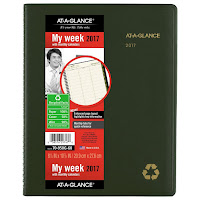My grandchildren have inherited my generation's unfortunate desecration of the food supply in the form of multiple food allergies. Three of my nine grandchildren are coming to visit next week, so the sailing vessel
Kintala's allergy-free test kitchen is in full testing mode today for new recipes. I actually came up with this recipe as a result of trying to make some form of rice tortilla or wrap. My original attempt didn't result in anything appealing so, in an effort to salvage what I had made, I decided to convert them to tortilla chips to use for scooping hummus. They were a grand success. If you happen to have a gluten free issue, please try these. They are super quick and easy to unbelievably inexpensive, and are much more delicious than any I've bought in the store.
Measure 1/4 C white rice flour into a small bowl. Organic rice flour is best, but I didn't have any at the moment so I used regular. Add 1/4 tsp of olive oil and 1/8 or less tsp of salt to the rice flour and stir.
Add a little water at a time while stirring with a wooden spoon until a ball forms and cleans the sides of the bowl. It should look and feel like play dough - soft but not sticky. If you add too much water, don't worry - just add a bit more rice flour until the consistency is correct.
Divide the dough into two balls.
Sprinkle a bit of rice flour onto a square of waxed paper or parchment paper. Press the ball out into a circle with your fingers.
Sprinkle a bit more rice flour onto the dough and top with another piece of waxed paper. Roll the dough with a very light touch on the roller. Stop periodically and remove the paper, add a bit more rice flour, replace the paper, flip, and repeat. Do this until the circle is about 9" across and as thin as you want your chips. Thinner yields lighter chips, thicker yields crunchier chips. Just remember that the thinner the dough, the harder to transfer it to the pan.
Remove the top paper and, using the bottom paper, flip onto a medium hot griddle. Remove the paper that you used to transfer it. Cook until small bubbles appear, flip, and cook again until the dough is set and the edges start to lift. It will not get browned so don't over cook it.
While the tortilla is cooking, heat a couple cups of oil in a small pan to between 350° and 360°. It doesn't take much oil. If you are making the cinnamon sugar version of these, I think you could use coconut oil but I haven't tried it. I use our infrared thermometer for this and it works well.
Cut the tortilla into 6 wedges with a knife or pizza cutter.
Place 3-4 of the wedges into the hot oil. They will immediately puff up and float to the surface. Cook them for about a minute (depends on your oil temp) until the bottom starts to get golden, then flip them with a slotted spoon.

Cook them another minute or less until the second side is golden.
Remove them to a cooling rack or cookie sheet lined with paper towels to drain.
Immediately salt them while still warm. You can use a fine regular salt, garlic salt, cinnamon sugar, or any other seasoning. The finer the consistency of the seasoning, the better it will stick. Cool them completely. I'm not sure about storing them. I will update later. At this point, I think it's best to make small batches that you will use right away. One of these recipes makes 12 chips. What you see here is two recipes' worth.

These are super crispy and excellent for scooping hummus.
Enjoy!






























